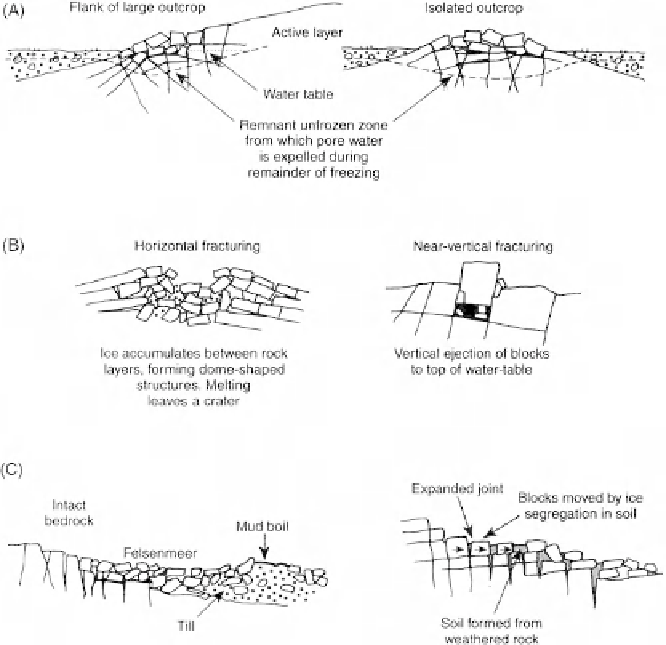Geology Reference
In-Depth Information
6.6.1. Bedrock Heave
The interaction between bedrock and groundwater controls the nature of bedrock heave
(Figure 6.18). Usually, upward displacement is the result of excess water pressures created
in the zone between the permafrost table and the downward-advancing freezing front.
Where the saturated zone in the active layer becomes confi ned, the attempted expulsion
of water supplies the heaving force. This is usually relieved along joints and bedding
planes. Bedrock heave is particularly favored where the water table lies close to the surface
in jointed granite, gneiss, quartzite, and other hard bedrock (Dredge, 1992; A. S. Dyke,
1978; L. S. Dyke, 1984). In such terrain, it is not uncommon for the active layer to be
several meters in thickness.
Depending upon pre-existing fracture characteristics, bedrock heave varies from single
ejected blocks to dome-shaped accumulations up to several meters in diameter. According
to L. S. Dyke (1984) yearly movements may be as much as 5 cm, horizontally and vertically.
As such, even compact sedimentary strata or igneous bedrock may experience defor-
mation suffi cient to damage man-made structures preferentially located upon these
(assumed) fi rm foundations.
Figure 6.18.
Different types of bedrock heave. (A) Water-expulsion mechanism in well-indurated
rock with relatively-thick active layer (mainland, Canadian Shield). (B) Infl uence of fracture fabric
on heaving style. (C) Ice-segregation mechanism displaces rock either by freeze-thaw creep of rock
transported to a soil surface or by direct application of pressure applied by ice segregation in weath-
ering products. Modifi ed from Dyke (1984).

